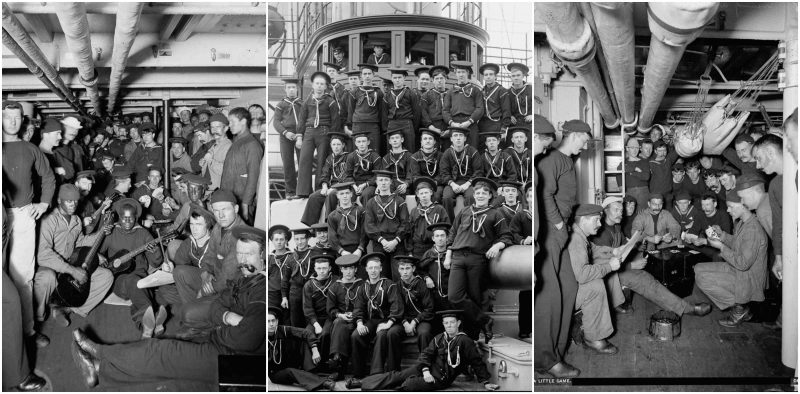The USS Brooklyn (ACR-3/CA-3) was the third United States Navy armored cruiser, the only one to be named at commissioning for a city rather than a state.
Ordered for $3,450,420.29 (hull and machinery), she was launched on 2 October 1895 by William Cramp and Sons Ship and Engine Building Company of Philadelphia.
Sponsored by Miss Ida May Schieren, daughter of Charles A. Schieren, Mayor of Brooklyn, New York; and commissioned on 1 December 1896, Captain Francis Augustus Cook in command.
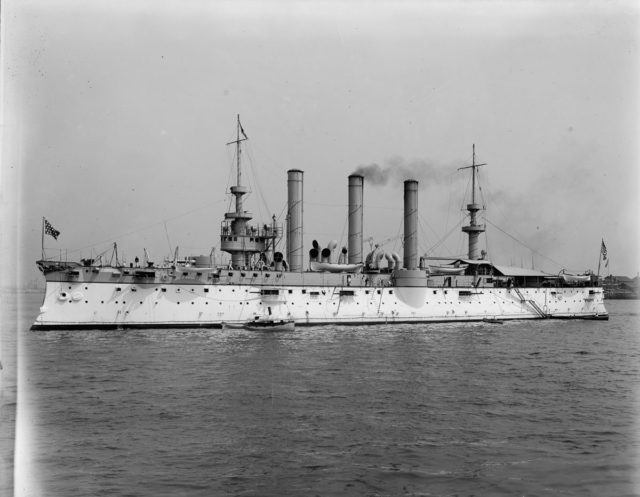
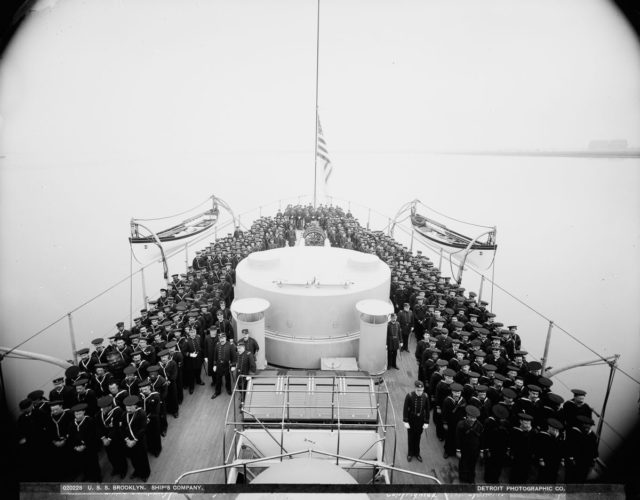
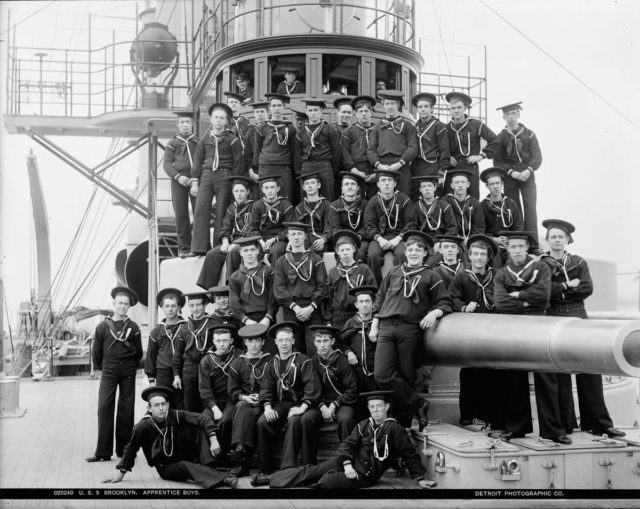
Brooklyn as built had a main armament of eight 8 in (203 mm)/35 caliber Mark 3 and/or Mark 4 breech-loading rifles in four twin Mark 8 turrets in a “lozenge” arrangement. The forward and starboard side turrets were electric-powered, while the other two turrets were steam-powered.
This was to test which system was better, and as a result the Navy adopted electric power for future turret designs. Secondary armament was twelve 5 in (127 mm)/40 caliber rapid fire (RF) guns in sponsons along the sides, along with twelve 6-pounder (57 mm (2.2 in) Driggs-Schroeder RF guns, four 1-pounder (37 mm (1.5 in)) Driggs-Schroeder saluting guns, and five 18 in (457 mm) torpedo tubes.
Some additional weapons on wheeled carriages were carried for use by landing parties; these included two 3-inch (76 mm) field artillery pieces and four Gatling guns.
Brooklyn had significantly less protection than New York in order to allow for increased armament. The belt was 3 in (76 mm) thick and 8 feet 6 inches (2.6 m) deep, of which 5 ft (1.5 m) was below the waterline. It protected only the machinery spaces.
The armored deck was 6 in (152 mm) thick on its sloped sides and 3 in (76 mm) in the flat middle amidships, but only 2 1⁄2 in (64 mm) at the ends. The gun turrets had up to 5 1⁄2 in (140 mm) of armor, on 8 in (203 mm)-4 in (102 mm) barbettes with 3 in (76 mm) protecting the ammunition hoists. The secondary gun sponsons had 4 in (102 mm), while the conning tower was 8 1⁄2 in (216 mm) thick.
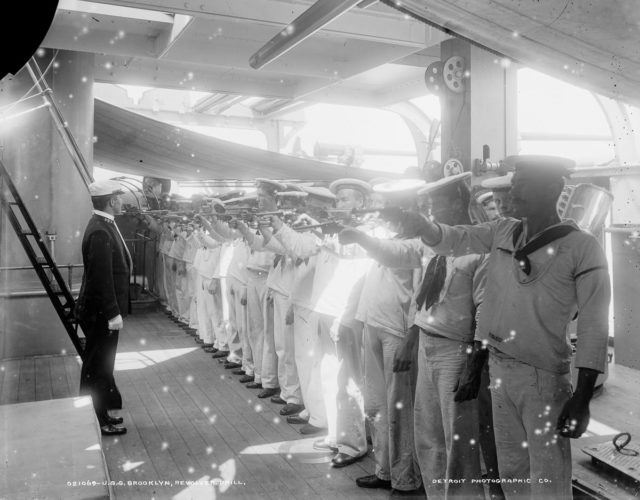
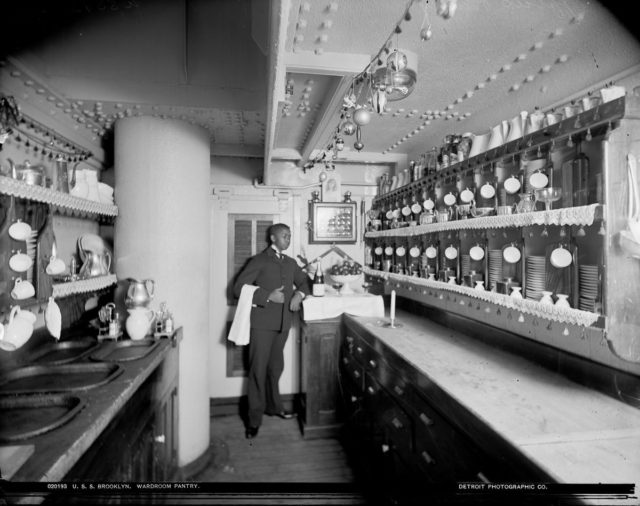
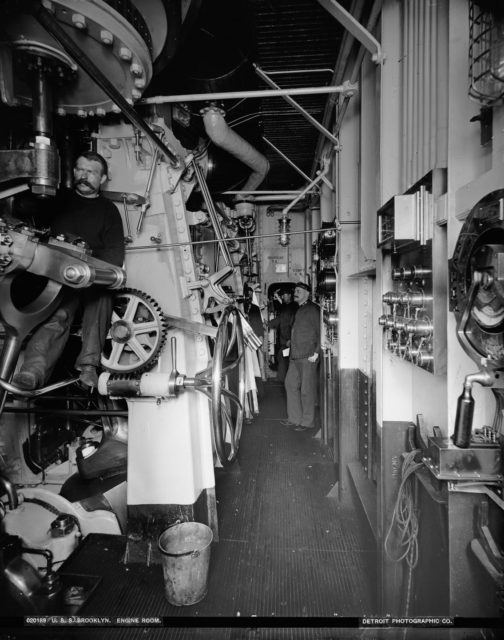
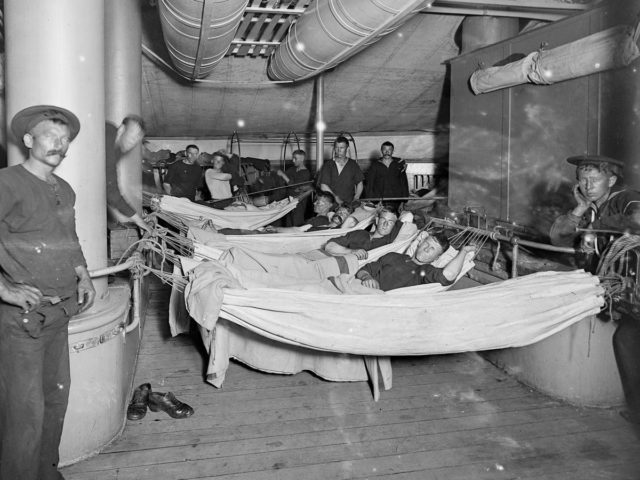
Brooklyn‘s first assignment was a special cruise to Britain with representatives of the U.S. for the Diamond Jubilee of Queen Victoria. The cruiser returned to the east coast in July 1897 and cruised there and in the West Indies until becoming flagship of the Flying Squadron under Commodore W. S. Schley on 28 March 1898.
During the Spanish–American War, the Flying Squadron arrived at Cienfuegos, Cuba on 21 May and established the blockade of that port. On 26 May, the Squadron arrived at Santiago de Cuba, where the Spanish fleet was being held behind the protection of the forts.
Brooklyn was a key vessel in the Battle of Santiago de Cuba on 3 July, in which the Spanish Fleet was destroyed. Although she was struck 20 times by whole shot, Brooklyn suffered only one man wounded (Fireman J. Bevins) and one man killed (Chief Yeoman George Henry Ellis).
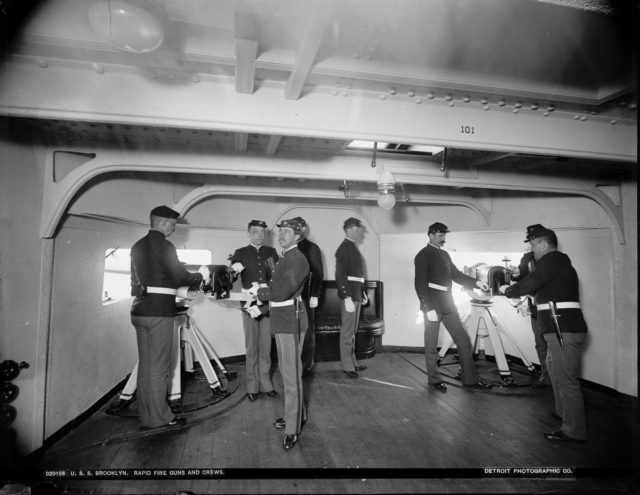
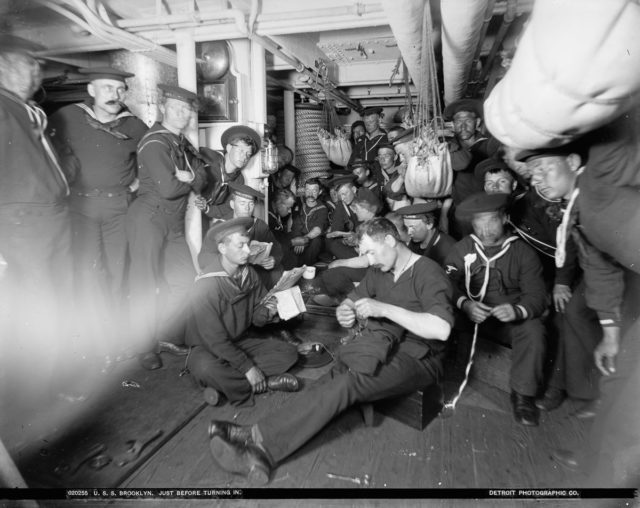
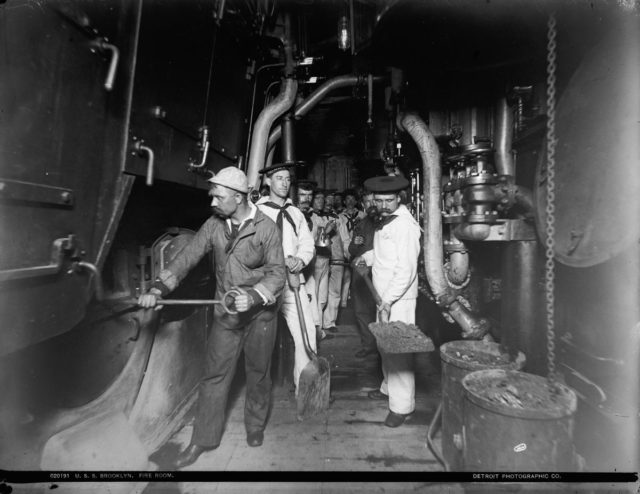
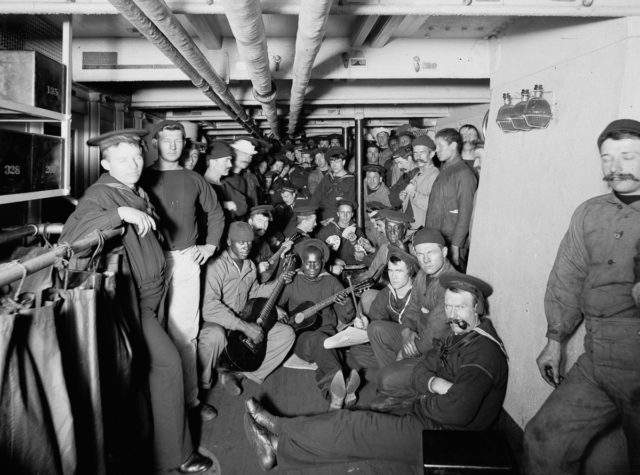
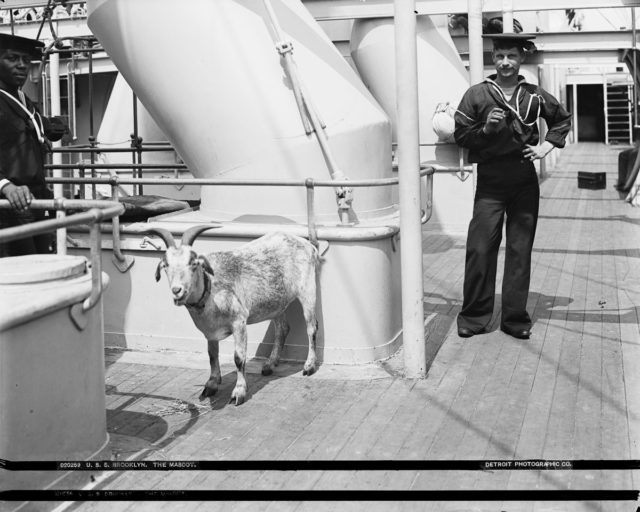
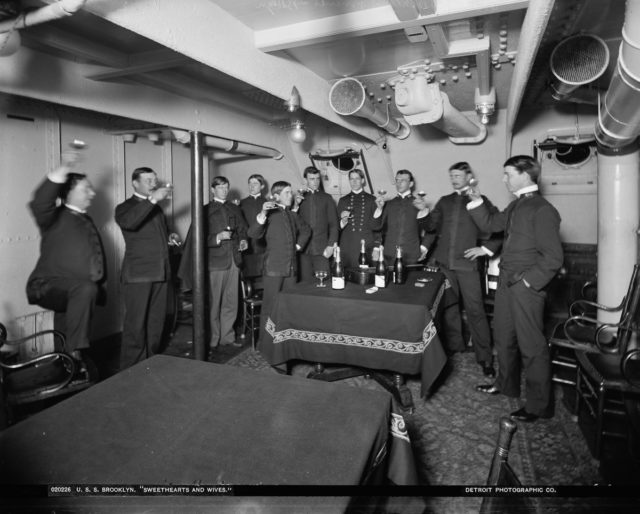
Brooklyn returned to Tompkinsville, New York on 20 August; cruised along the Atlantic coast and in Caribbean waters; participated in the Spanish–American War Victory Celebration at New York on 5 October; and in the Dewey Celebration at New York in September 1899.
She left Hampton Roads on 16 October and sailed via the Suez Canal to Manila, Philippine Islands, where she arrived on 16 December.
She became flagship of the Asiatic Squadron and participated in the China Relief Expedition (8 July – 11 October 1900). She made a cruise to the Dutch East Indies, Australia and New Zealand from 10 April – 7 August 1901; the last stage was to Melbourne, Auckland, Wellington and Sydney. She remained with the Asiatic Squadron until 1 March 1902, when she sailed for the United States via the Suez Canal and arrived at the New York Navy Yard on 1 May.
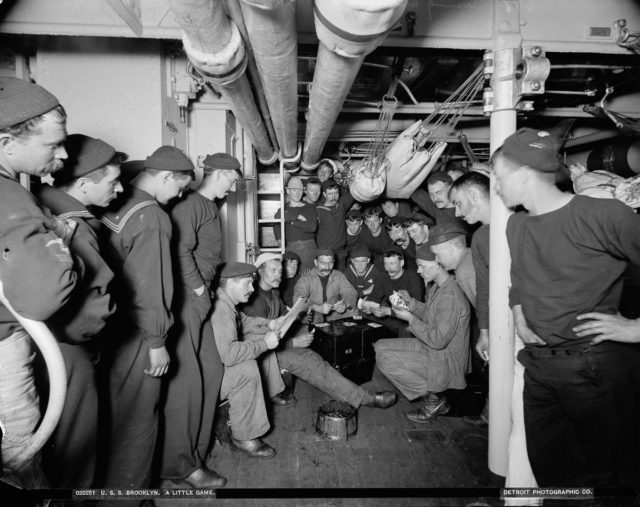
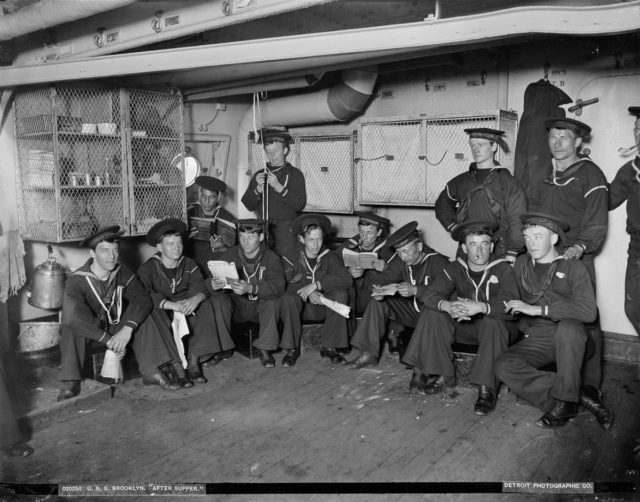
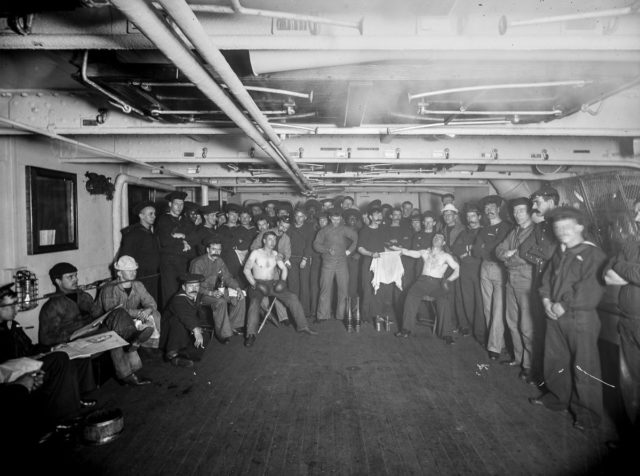
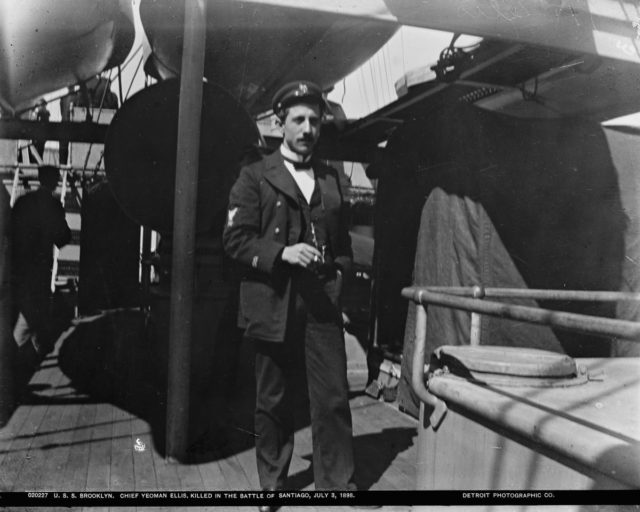
Placed out of commission on 23 June 1908, she was commissioned in ordinary on 2 March 1914. She was assigned to the Atlantic Reserve Fleet and served as receiving ship at Boston Navy Yard from 24 July 1914 – 13 March 1915. She was placed in full commission at Philadelphia on 9 May 1915 and served on Neutrality Patrol around Boston Harbor until November, when she sailed to the Asiatic Station to serve as flagship for the Commander-in-Chief of the Asiatic Fleet.
She attended to regular military and diplomatic duties in China, Japan, and Russia until September 1919, when she became the flagship of Commander, Division 1, Asiatic Fleet. In January 1920, she was assigned to the Pacific Fleet as flagship of Commander, Destroyer Squadrons, and remained there until 15 January 1921.
